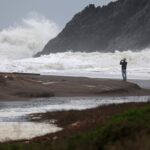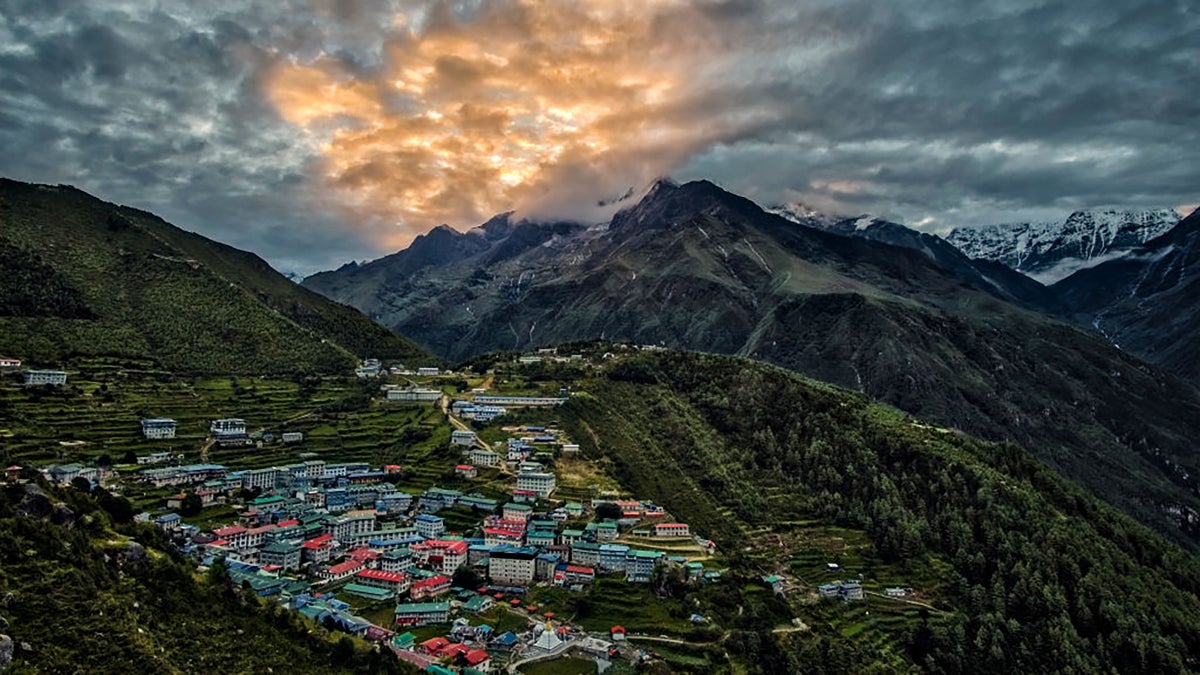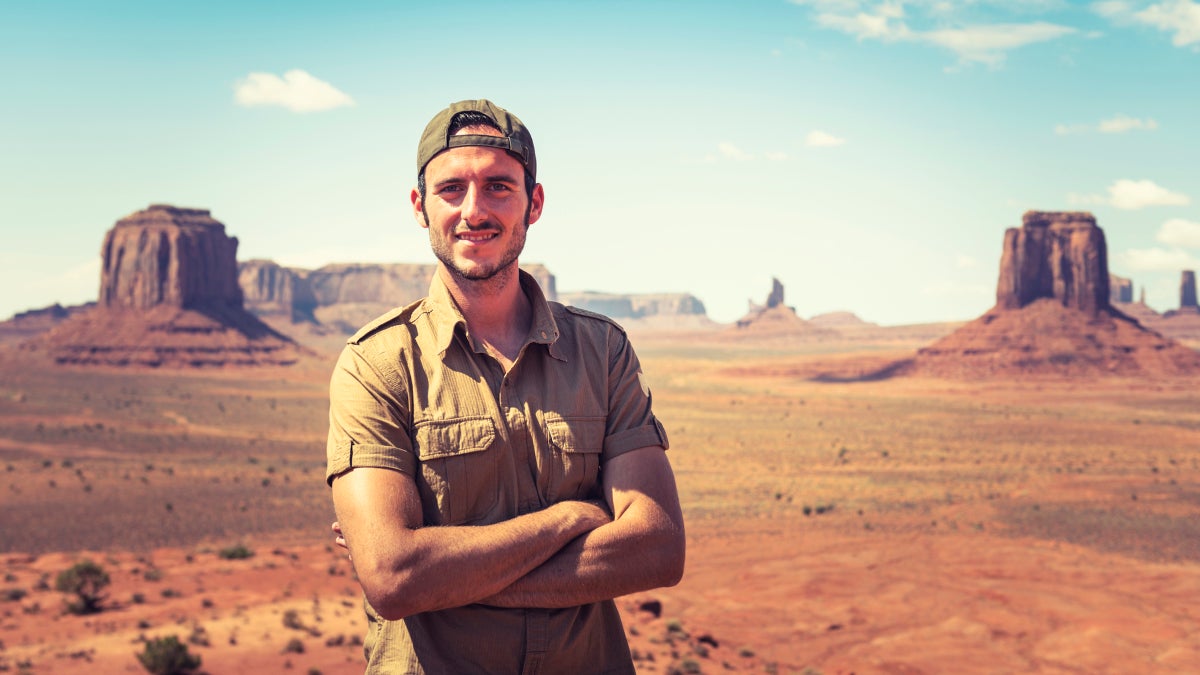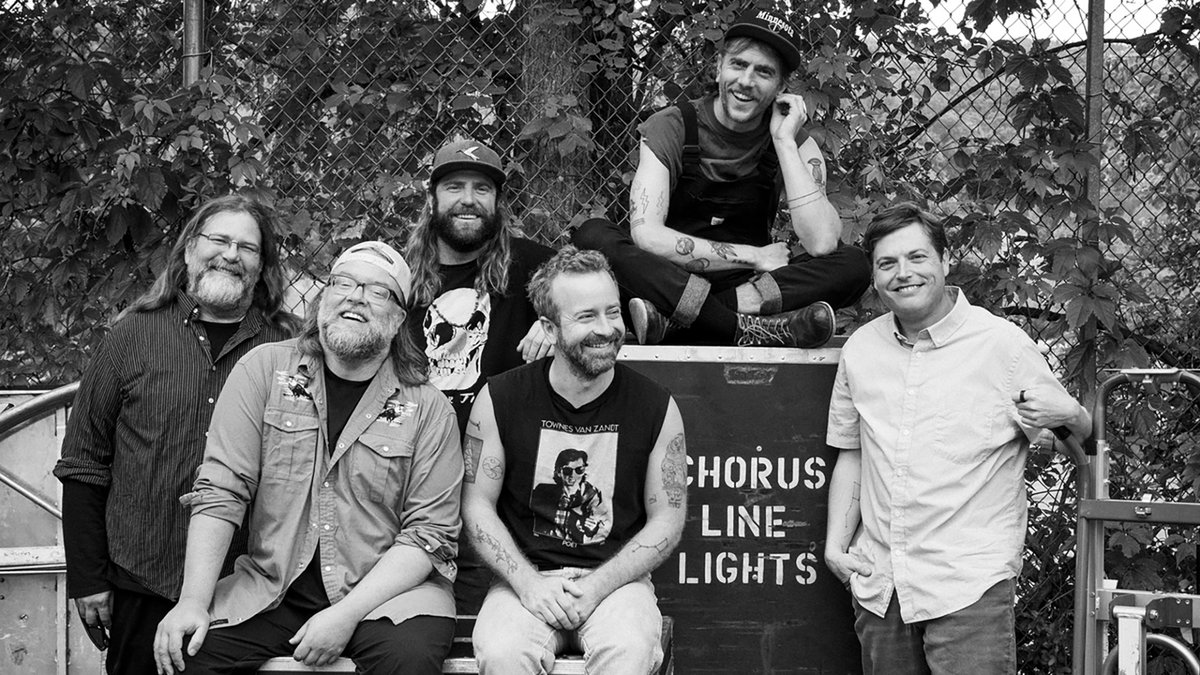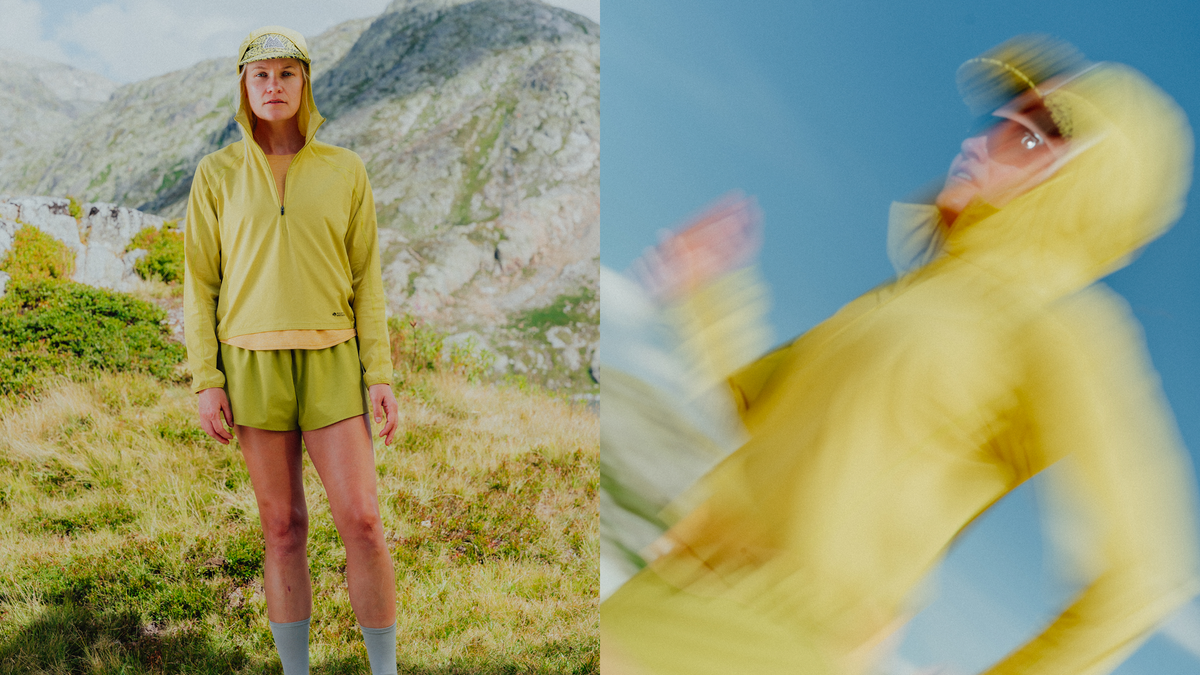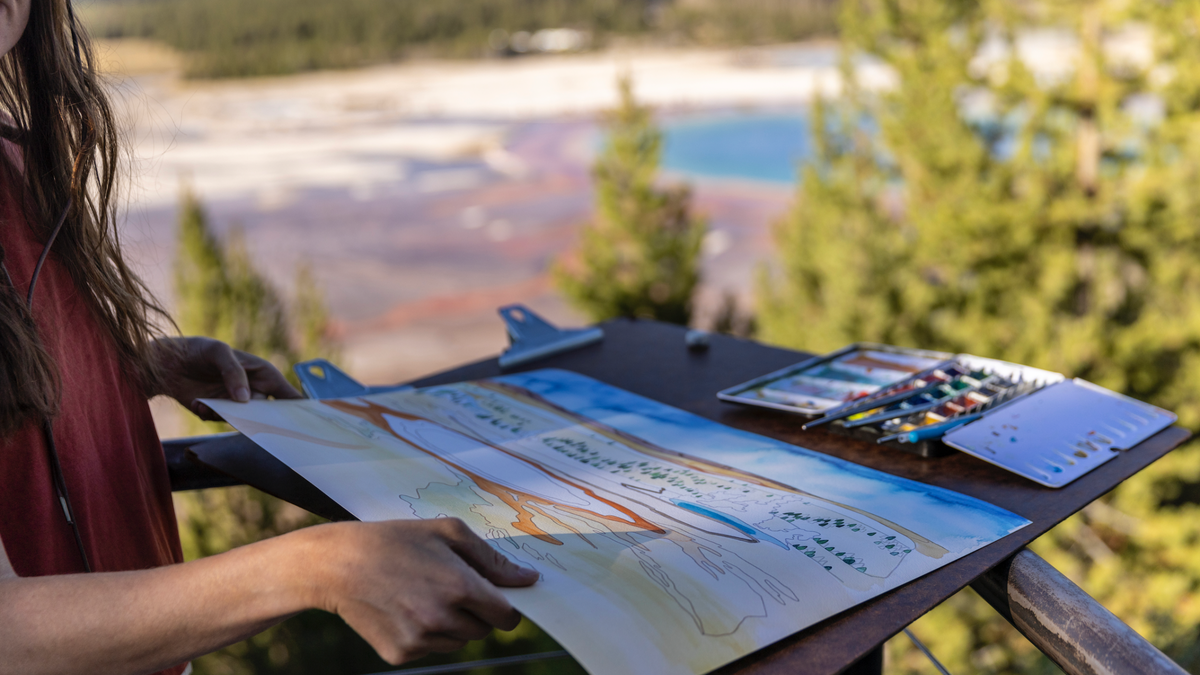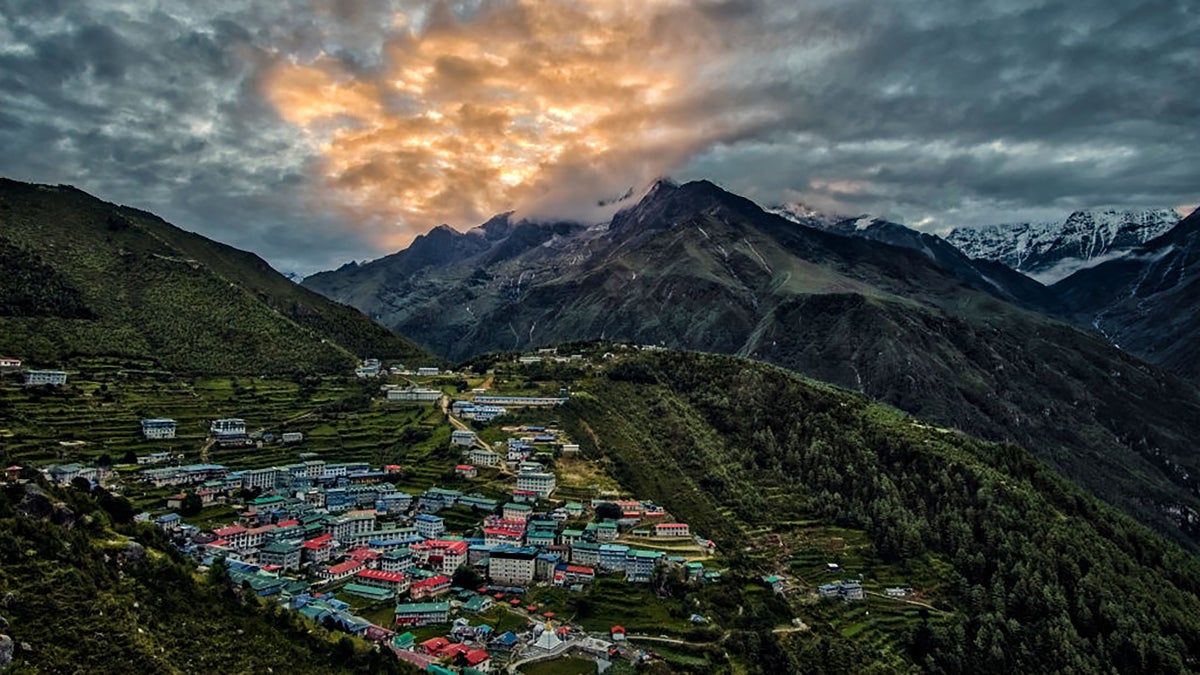
When many Americans think of the trek to Mount Everest Base Camp, they envision a rugged trail through the remote Himalayan wilderness filled with hearty Sherpa climbers and hairy yaks laden with climbing gear.
This vision is mostly accurate, but with a few important tweaks. The yaks often haul cases of craft beer. The Sherpa will stop and tell you about his recent vacation in New York City. And you can order a perfectly poured cappuccino in a quaint village at 12,000 feet.
Globalization has impacted even the most rural parts of Nepal, in more ways than you might have expected. As someone who has lived in Nepal for the last 20 years, I can tell you that it’s not necessarily a bad thing.
Starting the Hike in Lukla
Earlier this week I started my journey to Mount Everest Base Camp from Lukla, a trekking outpost in the Himalayan foothills, which is home to the self-described “world’s most dangerous airport.” From Lukla, Mount Everest is approximately 40 miles away in trail miles. But the hike there often takes 10 or 11 days to complete. That’s because you gain about 8,200 vertical feet along the way, climbing to 17,598 feet above sea level at Everest Base Camp.
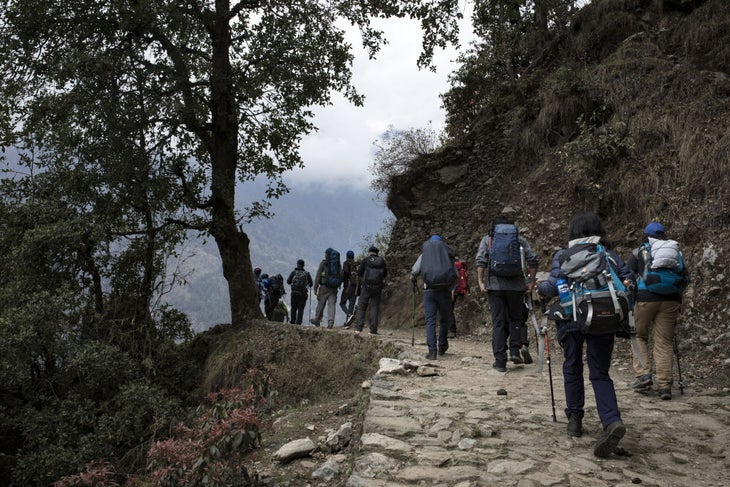
After leaving Lukla, the trail to Base Camp undulates for three hours through rhododendron forests and small villages to a cluster of lodges in Phakding. I hiked alongside three young Nepalis: Sabin, my guide, and Kami Chhiri and Jiban, who are porters. All three are in their late teens to early twenties, working in Nepal’s trekking industry to support themselves and their families while they finish college.
The hike to and from Everest Base Camp is largely responsible for the thriving tourism industry in this part of Nepal. When I first visited this area 20-or-so years ago, there were far fewer hotels and guiding companies. Today, you can book a room in any number of lodges along the route, ranging from $6 a night for a bare-bones experience all the way up to $100 a night for a luxury stay. I’m staying in $60 hotels, which give me a soft bed and my own shower with hot water.
Every year, thousands of trekkers from around the world sign up for the two-week adventure along the path. They hire guides, porters, cooks, and other helpers. The entry-level pay for these workers is about $17 a day, with a tip at the end of the journey. Along the way, visiting trekkers can expect to pay $7 for a meal, $3 for a coffee, and $5 for a beer in the hotels, lodges, and restaurants along the way. These prices—high by Nepal standards—drive important dollars into the communities.
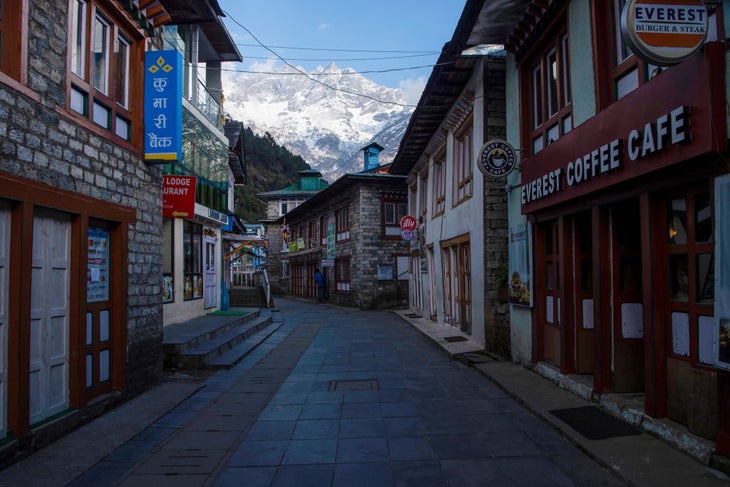
Sabin, my guide, is thin with a hipster mustache. He carries a small backpack with a pair of psychedelic-colored Crocs sandals strapped to the outside. Chirri and Jiban don’t have it as easy, as they are carrying my five bags of camera gear and climbing equipment. We generally walk together, joking and chatting in Nepali.
As we walked, we crossed groups of tired trekkers returning to Lukla from Mount Everest—they were sunburned and coughing as they slowly walked along the stony trail. I told myself that I’ll look better in two weeks.
On the Trail to Namche Bazaar
We left Phakding at 7 A.M. The trail out of town travels alongside the Dudh Khosi river, milky white from the silt it carries down from the glaciers above. We walked past groups of Australians, Chinese, and British trekkers, whose hiking poles all clattered in unison as they walked. We crossed suspension bridges that swayed in the wind, and we waited impatiently behind mule trains laden with gear, hoping to avoid the heavy clouds of dust and pulverized feces they left in their wake.
We walked alongside a group of five young men carrying stacks of half-inch plywood. Most of the stuff going up the valley—food, gear, or even building materials—must be hauled up by an animal or human. It’s still too expensive to haul most freight via helicopter.
Mules usually carry packaged goods such as toilet paper, rice, and other food. Humans haul fragile cargo: whisky bottles and window panes. Every so often, the plywood carriers struck their load with a heavy wooden walking stick. The sound cautioned us to stay the heck out of their way.
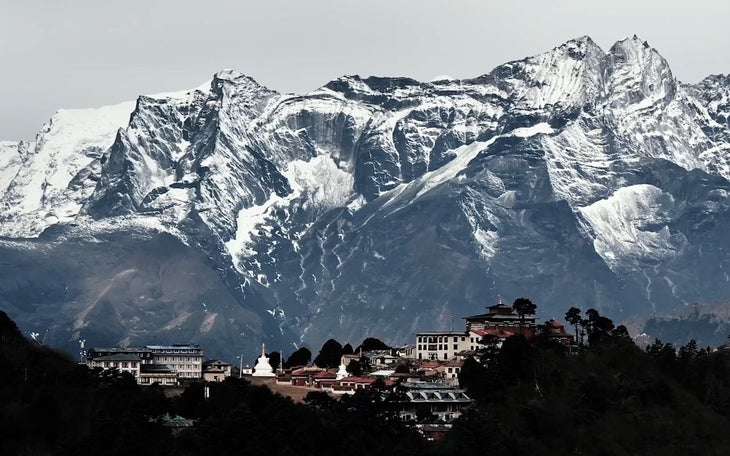
Many stretches of the trek to Base Camp don’t feel remote—after every 30 minutes of walking the trail bisects another village or town. There are quaint lodges made from stone or plywood sitting adjacent to potato fields. Each lodge sells something that’s enticing to hikers: mushroom pizza, a bucket of cold Fanta, and even horse cargo services available for around $100.
Three hours after departing Phakding, we crossed the final, and highest, suspension bridge, which is named after Sir Edmund Hillary.
Navigating these bridges requires precise timing—you don’t want to reach the midway point and encounter a mule train or heavily laden porter coming the opposite direction. I stopped halfway across the bridge and looked down: below us was an older bridge that’s been turned into a bungee jumping platform for tourists.
After six hours and 2,700 feet of altitude gain, we arrived in the Sherpa trading village Namche Bazaar. When you arrive at Namche you are greeted by a welcoming sight: a dramatic fountain next to bleach-white Buddhist stupa surrounded by golden prayer wheels.
There’s also a cement bust of the late Pemba Doma Sherpa, a pioneering climber and a Namche local. In 2000 she became the first Nepali woman to climb Mount Everest from the North side.
I became good friends with Pemba Doma Sherpa 20 years ago when I ran a nonprofit for Sherpa porters and climbing guides. In 2006 she traveled to Maine to visit me. At the time, I was rebuilding a crumbling farmhouse, and she was in the United States on a speaking tour. I can still picture Pemba Doma standing on the roof with me, grinning, as she tossed sheets of foam insulation with uncanny precision. Pemba Doma tragically died a year later on 27,940-foot Lhotse when she fell while descending from the summit.
Downtown Namche’s Shops and Bars
You’ve probably seen photos of Namche Bazaar perched on the side of the sheer Himalayan hillsides. The town, which is at 11,200 feet, is a collection of homes and lodges, mostly built from perfectly-squared marble stones and topped with green corrugated tin panels.
The city’s roads and walkways are steep, bisected by narrow footpaths, all displaying wares or services for sale. Historically, Namche was the center of commerce and trade for the Sherpa community in the Khumbu Valley. Locals would walk up and over the nearby Nangpa-La pass, which crests at 19,000 feet, to gather salt and other goods from Tibet to barter for fabric and grains from the lowland at a weekly Saturday market.
Twenty five years ago when I first visited Namche, the market was still active, and I remember wandering the open grounds picking between piles of fresh oranges and small hen eggs. A handful of wild-eyed Tibetan men sold knockoff North Face jackets, thick fleece blankets, and Chinese solar power kits. I remember once one of them caught my eye and lifted his shirt to reveal a silver dagger inlaid with turquoise and coral tucked into the waistband of his pants. “You want?” He said quietly to me. “Good price.”
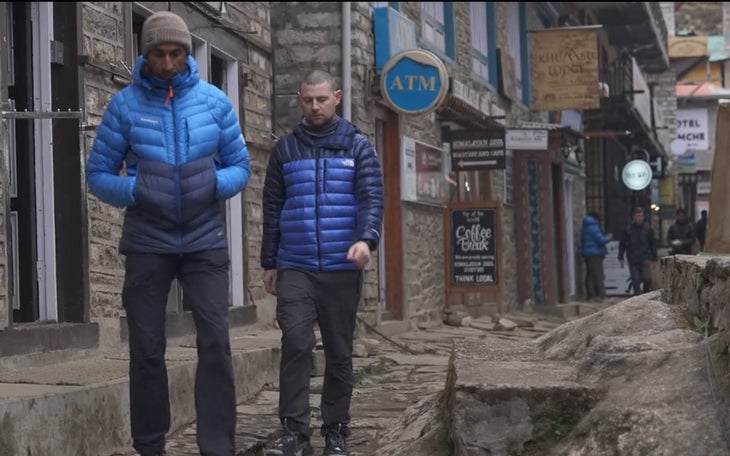
Those days are long gone. Thanks to the Mount Everest trekking and climbing industry, Namche has become Nepal’s version of Aspen or Chamonix. It more resembles a resort town than a remote Himalayan trading post.
After settling into a room at the Kala Pathar Lodge, I joined a legion of tired trekkers wandering around the town. At the North Face outlet store—selling authentic gear from the brand—a few bored trekkers leafed through the down jackets.
Above us at the Hungry Yak Bar—the establishment markets itself as “The world’s highest live music bar at Namche”—a local cover band band belted out a passionate version of the song “What’s Up” by American nineties rock group 4 Non Blondes.
I walked past souvenir shops and art galleries, massage parlors and stores selling fake crocs, to a coffee shop called Sherpa Barista. I was halfway through my coffee before I noticed a pulse oximeter, a device used to measure your body’s adaptation to altitude, dangling from the wall next to me. I put it on my finger but the battery was dead.
But Namche Isn’t Just for Tourists
Next, I wandered into the Cafe Danphe Bar, drawn in by Bon Jovi’s “Bed of Roses” blaring from two oversized speakers. The place was empty except for three locals huddled around a metal barrel stove watching soccer on TV. The floors and walls of the bar were wrapped in graffitied t-shirts. Each shirt celebrated an “epic trek,” “the best of times,” “100 percent success on the nearby Renjo-la pass.”
After only two days of walking, the scene in Namche felt decadent. But I also noticed that locals far outnumbered foreign trekkers in town. Tourism may have changed the town, but Namche still exists for the locals, too.
The sun dipped behind 20,300-foot Kongde peak on the other side of the valley. Walking back to the hotel, I bumped into Sabin, Kami Chhiri and Jiban. We decided to play snooker in a nearby bar, and snuck through a tight alley between an art gallery showcasing brightly lit paintings of yaks, and a store selling antique masks.
The alley led to a steep flight of metal stairs and into a large, windowless hall with three brightly-lit snooker tables. The air was heavy with cigarette smoke. A handful of locals glided around the tables, expertly sinking one ball after another. Hindi music echoed across the bare concrete walls. We settled in for a game.
The post The Hike to Mount Everest Base Camp Doesn’t Feel So Remote appeared first on Outside Online.








